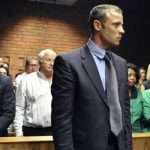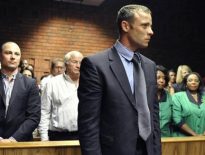(Reuters) – Trucks of workers and building materials hurtle through the mining town of Likasi at the heart of Congo’s copper producing south, evidence of the billions being poured into the region after years of war and underinvestment.

But rebel fighters feeding off local grievances and secessionist sentiment are threatening to resurrect the specter of a southern breakaway, in a fresh challenge to the stability and integrity of the Democratic Republic of Congo.
The rebels, estimated to number anything from a few hundred to a few thousand, armed with bows, arrows and assault rifles, could re-open decades-old political fissures in Katanga, Congo’s economic engine but also its most independent-minded province.
Their forays south, away from their stronghold in the province’s north and towards Katanga’s mining heart, raise the stakes in a region that is also a power base for a government already stretched by a separate insurgency in the east.
Medecins Sans Frontieres (MSF) is one of a handful of aid organizations in Katanga operating in the vast and virtually road less northern area known to locals as the “Triangle of Death” in reference to atrocities including massacres, rape and cannibalism carried out by the rebels, known as the Mai Mai.
“The Mai Mai are coming out of their normal zone within the triangle. Since December we’ve seen an intensification of clashes with the army,” said Pascal Duchemin, head of MSF-Holland in Katanga’s capital Lubumbashi.
While international attention has focused on a rebellion along Congo’s restive eastern border with Rwanda and Uganda, the violence in Katanga has simmered largely unnoticed.
MSF has been forced to reduce its presence because of security concerns in the north, where it reports empty, burnt villages for kilometers at a stretch. Footage shot by a local journalist shows Congolese troops marching through hamlets gutted by fire and families housed in makeshift bush shelters.
Since 2011, starting in Katanga’s remote and desperately poor northeast, Mai Mai fighters – a coalition of hard line Katangan secessionists and remnants of militias left over from Congo’s last war – have forced more than a quarter of a million people from their homes, according to theUnited Nations.
Now they are pushing south, with attacks reported in January just 70 km from Likasi, and have also moved into artisanal mining areas, where a traumatized population is fleeing to escape them. Government soldiers are also accused of pillaging.
Earlier this month at least 14 bodies, including women and children, washed up in a river near President Joseph Kabila’s hometown of Manono, an area where both Mai Mai and the army are active, and where the UN has reported civilian killings by the rebels and summary executions by the security forces.
The rebels have also been blamed for repeated assaults on the airport in the regional capital Lubumbashi over the last two years, in which presidential guardsmen have been killed.
“The population is afraid of the army as well as the Mai Mai, and we’re worried for those who are living in the bush, because anyone found there can be considered as a rebel,” Duchemin adds.
MOVING SOUTH
Katanga, a province roughly the size of Spain, was the heart of central Africa’s colonial mining industry, its growth fuelled by Belgium’s Union Miniere du Haut Katanga, which produced tonne upon tonne of copper and also the uranium for the atomic bombs dropped on Japan in 1945.
Decades of corruption and a brutal civil war brought Katanga to its knees. Relative stability since the 2003 peace deal and ensuing elections, plus high metal prices, brought private miners. Officials say Congo’s copper exports jumped to 600,000 tonnes in 2012, from under 20,000 a decade ago.
Copper giant Freeport McMoRan, trader and miner Glencore and others have invested billions to tap Congo’s high-grade deposits. All plan further growth.
So far, the rebels have mostly hit civilian and government targets, though one international mine executive said company buses carrying miners to work had been hijacked. The region’s major miners declined to comment, but several operators active in the region expressed quiet concern at what could shift from being a sideline annoyance to a major disruption.
“It’s expanded geographically from being in a fairly remote and isolated part of Katanga,” Neil Wigan, Britain’s ambassador to the country, said in Lubumbashi.
“As it pops up in more places, then security becomes a problem. As we’ve seen in Algeria, natural resources companies need to be particularly alert to security constraints at the moment,” he added, in reference to the recent hostage crisis at an Algerian gas plant in which at least 80 people died.
The government is keen to downplay the threat in a region that draws the vast majority of its big international investors.
“We want to re-assure investors there’s no big security risk in Katanga. In any post-conflict state there will be some residual elements, that we will permanently neutralize,” Prime Minister Augustin Matata Ponyo Mapon told Reuters.
Rebel numbers remain low, but the UN says recruitment means their ranks may have swollen to more than 2,000.
In mid-January, Katanga’s governor Moise Katumbi wrote to the UN’s peacekeeping mission asking for help, and UN sources say blue helmets will deploy around the northern town of Pweto, on the border with Zambia, to help bolster Congo’s notoriously ill disciplined and ineffective army.
The violence, as the country already begins debating 2016 elections that could spell the end for Kabila’s rule, also risks re-opening old wounds in Katanga, which has always had a fractious relationship with central government.
It was long a separate part of the Belgian colonial empire and took just 11 days after Congolese independence in 1960 for Katanga to break away, under the leadership of secessionist leader Moise Tshombe and with the backing of Belgian companies keen to maintain the lucrative mining operations.
The independence bid failed but tensions remain. Katanga’s many fault-lines separate the province’s poor north and its richer south, native Katangans from workers brought to the mines from neighboring Kasai, and even strains between the many tribes, including Kabila’s own, the Balubakat.
There is also widespread perception that Kinshasa pockets Katanga’s wealth but neglects its development, leaving Congo’s most minerally rich region with some of the highest malnutrition and infant mortality rates in a country already ranked the least developed on earth by the UNDP.
Observers say rebel recruitment is aided by sympathy for the old secessionist cause and the poor conditions. Northern Mai Mai-dominated areas are cholera and malaria hotspots.
In Likasi, dilapidated low-rise buildings from the colonial mining boom line the streets, but there is little evidence of new growth, and the collapse of state miner Gecamines has left many jobless.
So desperate has the situation become, some might even welcome the rebels, say some on the streets of Likasi.
“We’ve been promised jobs by the government but seen nothing. It’s just possible that the people behind the Mai Mai could do a better job than those currently in power,” said one, student Pascal Assani.
MONEY DOESN’T LIKE NOISE
In Lubumbashi there is no sense of support for the rebels or out-and-out secessionism, but there is growing frustration with the government of Kabila; leading separatist politician Gabriel Kyungu wa Kumwanza says he has 300,000 signatures in favour of federalism in dozens of dog-eared, ringbound petitions piled haphazardly in the office at his lakeside home.
Kyungu, president of the provincial assembly, has long led the fight for greater autonomy from Kinshasa, but like other high-profile Katangan leaders, is opposed to the existing constitutionally approved decentralization plan, which would see the break-up of the Katangan province into smaller entities.
“Our priorities are very different from those of central government … Our country is a sub-continent; it must be federal. Katanga cannot be managed from 2,000 km away,” he says.
Katanga is meant to receive 40 percent of its contributions to central government, but receives much less, according to Kyungu, a fact acknowledged even by pro-Kinshasa politicians.
This lack of resources at a provincial level is behind the under-development, which is in turn fuelling the violence. Although the situation is not yet catastrophic, it could threaten investor confidence, Kyungu warns.
“Yes, there’s a risk … Money doesn’t like noise. While there’s the sound of tanks and boots, money will not come in.”
The coalition of two secessionist Katangan rebel groups – known as CORAK and CPK – with Mai Mai Gedeon, a brutal remnant of the defense groups set up by the current president’s father during the civil war, has led many to question whether local politicians are stirring up trouble at a time when Kinshasa is already at full stretch trying to control the country’s east.
“Given that the rebels have arms, food and communications, we’re sure there are big characters behind them,” Jean Pierre Muteba, the head of a group of nongovernmental organizations that monitor the mining sector in Katanga province.
“It’s something the (politicians) can use against the government, to say they can do in Katanga what’s being done in North Kivu, to show they can take territory, too.”
With Kabila badly weakened after a 2011 re-election marred by fraud and his army’s collapse in the face of the M23 rebellion, many are already looking to the next polls in 2016, when he is due to step down.
With the possibility Kabila might be replaced by a non-Katangan president, Muteba says hardliners backing the Mai Mai may already be making plans.
“Are they going to keep them armed and trained so that in 2016 they’d be a well organized force to claim independence? I think it’s a question we have to consider.”
(Reporting by Clara Ferreira-Marques; Editing by Will Waterman)





